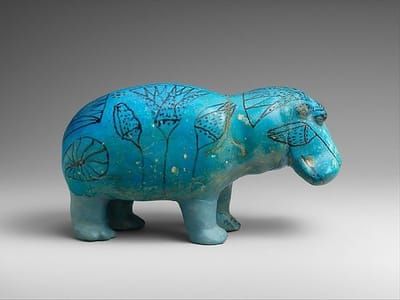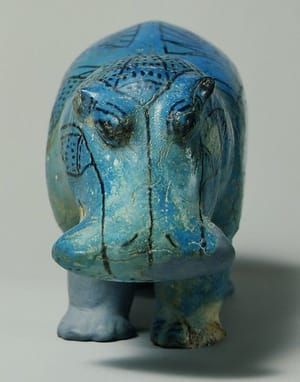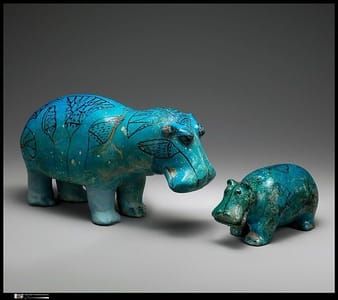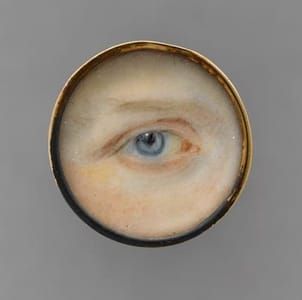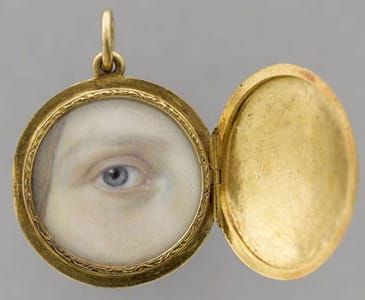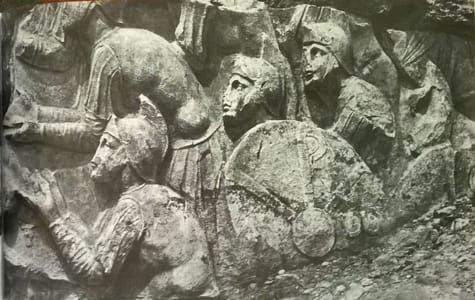
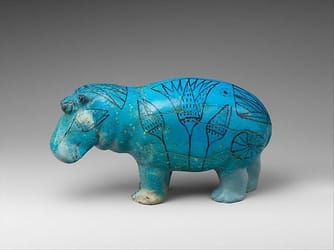
Standing Hippopotamus
Unknown
Middle Kingdom, Dynasty 12. Reign: Senwosret I to Senwosret II, ca. 1961–1878 BC.
This well-formed statuette of a hippopotamus (popularly called "William") demonstrates the Egyptian artist's appreciation for the natural world. It was molded in faience, a ceramic material made of ground quartz. Beneath the blue-green glaze, the body was painted with the outlines of river plants, symbolizing the marshes in which the animal lived.
The seemingly benign appearance that this figurine presents is deceptive. To the ancient Egyptians, the hippopotamus was one of the most dangerous animals in their world. The huge creatures were a hazard for small fishing boats and other rivercraft. The beast might also be encountered on the waterways in the journey to the afterlife. As such, the hippopotamus was a force of nature that needed to be propitiated and controlled, both in this life and the next. This example was one of a pair found in a shaft associated with the tomb chapel of the steward Senbi II at Meir, an Upper Egyptian site about 30 miles south of modern Asyut. Three of its legs have been restored because they were purposely broken to prevent the creature from harming the deceased. The hippo was part of Senbi's burial equipment, which included a canopic box (also in the Metropolitan Museum), a coffin, and numerous models of boats and food production.
From Egypt, Middle Egypt, Meir, Tomb B no. 3 of the nomarch Senbi II, pit 1 (steward Senbi), Khashaba excavations, 1910.
(http://metmuseum.org/art/collection/search/544227?rss=1&utm_source=artwork-of-the-day&utm_medium=rss&utm_campaign=rssfeeds)
8 x 3 x 4 in
Uploaded on Jul 31, 2017 by Suzan Hamer
Unknown
artistArthur
Wait what?

